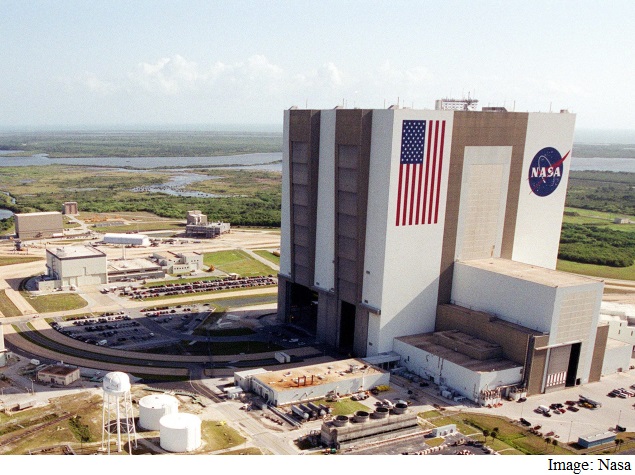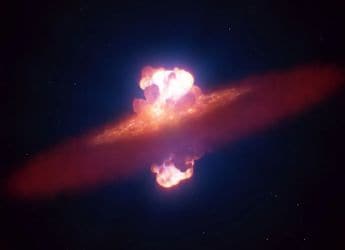- Home
- Science
- Science News
- Nasa Balloon Records Mysterious Infrasonic Sounds in the Stratosphere
Nasa Balloon Records Mysterious Infrasonic Sounds in the Stratosphere

Theories for the sounds range from wind in the balloon's path, to ocean waves, gravity waves, and clear air turbulence.
Others suggest the noises may be coming from movements from the balloon cable.
A Nasa-backed project now plans to send another payload to record more of these strange noises later this year, LiveScience reported.
The sounds were captured by Daniel Bowman, a student at the University of North Carolina at Chapel Hill.
"There haven't been acoustic recordings in the stratosphere for 50 years," Bowman was quoted as saying.
"Surely, if we place instruments up there, we will find things we haven't seen before," he added.
Bowman had released infrared microphones on a helium balloon above New Mexico and Arizona in August as part of the High-Altitude Student Platform study.
The balloon floated 725km across the Earth's surface and reached a height of more than 37,500 metres.
Infrasonic sounds are produced by waves at frequencies below 20 Hertz.
Sounds at those frequencies are inaudible to the human ear.
An important characteristic of infrasonic sound is that it travels large distances.
Get your daily dose of tech news, reviews, and insights, in under 80 characters on Gadgets 360 Turbo. Connect with fellow tech lovers on our Forum. Follow us on X, Facebook, WhatsApp, Threads and Google News for instant updates. Catch all the action on our YouTube channel.
Related Stories
- Samsung Galaxy Unpacked 2025
- ChatGPT
- Redmi Note 14 Pro+
- iPhone 16
- Apple Vision Pro
- Oneplus 12
- OnePlus Nord CE 3 Lite 5G
- iPhone 13
- Xiaomi 14 Pro
- Oppo Find N3
- Tecno Spark Go (2023)
- Realme V30
- Best Phones Under 25000
- Samsung Galaxy S24 Series
- Cryptocurrency
- iQoo 12
- Samsung Galaxy S24 Ultra
- Giottus
- Samsung Galaxy Z Flip 5
- Apple 'Scary Fast'
- Housefull 5
- GoPro Hero 12 Black Review
- Invincible Season 2
- JioGlass
- HD Ready TV
- Laptop Under 50000
- Smartwatch Under 10000
- Latest Mobile Phones
- Compare Phones
- Vivo Y500 Pro
- Realme GT 8 Pro Aston Martin F1 Limited Edition
- Huawei Mate 70 Air
- Moto G57
- Moto G57 Power
- Motorola Edge 70
- Moto G Play (2026)
- Moto G (2026)
- MacBook Pro 14-inch (M5, 2025)
- Asus Vivobook S16 (S3607QA)
- iQOO Pad 5e
- OPPO Pad 5
- Noise Diva 2
- Noise Halo 2
- Acerpure Nitro Z Series 100-inch QLED TV
- Samsung 43 Inch LED Ultra HD (4K) Smart TV (UA43UE81AFULXL)
- Asus ROG Ally
- Nintendo Switch Lite
- Haier 1.6 Ton 5 Star Inverter Split AC (HSU19G-MZAID5BN-INV)
- Haier 1.6 Ton 5 Star Inverter Split AC (HSU19G-MZAIM5BN-INV)

















